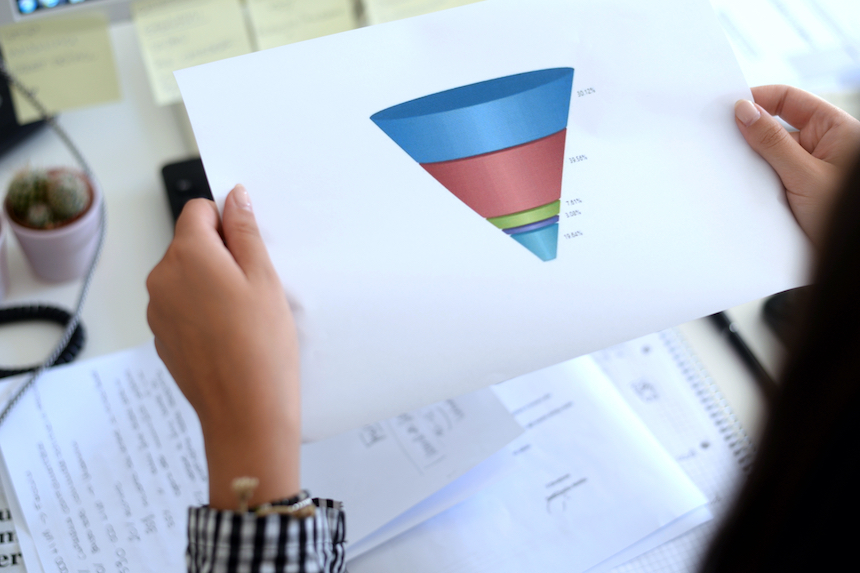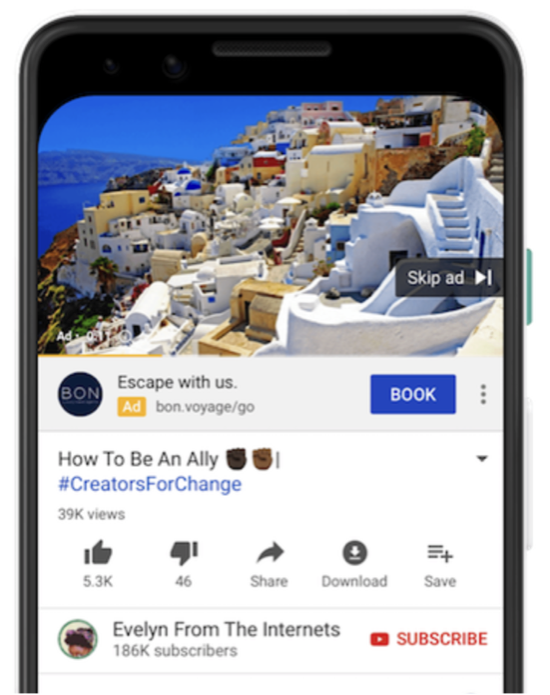A common misconception about B2B paid search marketing is that it’s only valuable at the end of the buyer’s journey.
In other words, it’s only useful when the prospect is primed to convert, whether that’s signing up for a demo or becoming a lead.
Naturally, advertisers want to maximize conversions (and so do we, of course!), so that part of the buyer’s journey gets the most attention.
But that’s only a narrow slice of what PPC can do.
In fact, PPC can be used at every stage of the B2B buyer’s journey. It’s not just for bottom of funnel!
In this blog post, I’m going to walk through the B2B buyer’s journey and look at how PPC can be used at each stage—illustrating with a specific example.
However, please remember this is an example—it’s not a recipe you can follow for success.
After all, every brand, product and service are different. You’ll need to experiment and test to find out what works best for you.

A B2B Example: Marketing a Medical Device
One of our clients has a single-use medical diagnostic device that it markets to hospitals. The product competes against similar devices that are multiple use.
The benefit of our client’s single-use device is that it has lower costs overall (because it doesn’t need to be cleaned) and improved safety (single-use devices have a lower risk of infection in this application).
Now let’s take a look at how we’re marketing this device with paid search across our client’s conversion funnel.
Top of Funnel: Awareness
PPC isn’t the first thing most people think of when they think of top-of-funnel marketing. Thus, they allocate little or no budget to it.
I get it. It’s hard to tie top-of-funnel actions directly to conversions, so it’s often overlooked or left out.
But this is a real shame (and a lost opportunity) because this stage of the funnel is your best chance to grow awareness and tee things up for future conversions.
This stage is all about making an impression, and so video ads are often a great fit.
For our medical device client, we’re using explainer video ads to communicate how their product reduces infections while lowering costs.
Our TrueView video ads (see generic example below) have a CTA that takes viewers to a landing page with a calculator that they can use to compare costs and savings.

We’re targeting these video ads to hospitals, “similar audiences” to our remarketing list, and other relevant audiences.
Middle of Funnel: Consideration
PPC can also move the dial mid-funnel by getting products and services onto a “short list” of buying options.
Display ads are often a great choice for this stage because you have so many targeting options.
In the case of our medical device client, we’re using remarketing to serve Display ads to visitors that have visited our client’s calculator landing page or viewed the video ad.
When they click on the Display ad, they’re sent to a landing page where they can set up a call or schedule a demo.
We’re also using in-market audience targeting to capture the attention of prospects that are researching similar products but may not be aware of our client’s brand.
Bottom of Funnel: Decision
Bottom of the funnel is where conversions happen and, as mentioned earlier, this is the stage that gets the most attention.
Hopefully, you’ve used the upper and middle stages of the funnel to convince prospects that your product or service is the best choice, and now it’s time to convert them.
Text ads are often a great fit for this stage.
At this stage, people are searching Google for your branded product—and text ads get right to the point with clear messaging in the headline and body text.
In the case of our medical device client, we created text ads that focused on the client’s brand name and certain keywords, such as the name of the medical device and descriptors such as “single use.”
Beyond the Funnel: Affinity
Unfortunately, not many advertisers consider PPC as a way to stay connected with customers and leads beyond the decision stage of the funnel. Instead, they choose to use email newsletters or social media campaigns to nurture those leads.
And sure, email newsletters and social media are great for this stage, but PPC can play a role too.
After all, not every lead and customer will follow you on social media or subscribe to your newsletter.
So, try using customer match to target text and Display ads to leads and customers that have already converted to promote special events and offers.
In the case of our client, we’ve suggested using their customer list to promote upcoming webinars, future product updates and accessories.
PPC Isn’t Just for Bottom of Funnel
Unfortunately, PPC gets pigeonholed as a bottom-of-funnel tool. But let’s not put limits where they shouldn’t exist.
Because when you start applying PPC to all stages of your B2B funnel, you’ll find it has an effect that ripples across them all.






